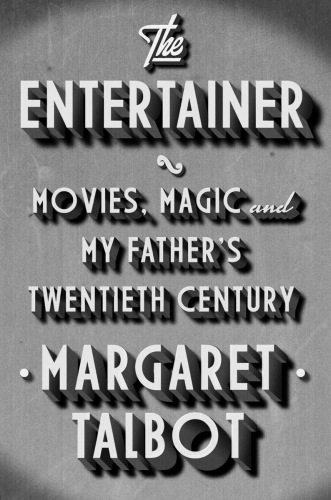
The Entertainer
Movies, Magic, and My Father's Twentieth Century
کتاب های مرتبط
- اطلاعات
- نقد و بررسی
- دیدگاه کاربران
نقد و بررسی

August 13, 2012
A staff writer with the New Yorker, the author remembers her father, the actor Lyle Talbot (1902–1996), with much fondness in this combination biography and autobiography. As she traces his life and career, a huge tapestry of American mass entertainment and popular culture is unfurled as a backdrop: “Zelig-like, he’d been present at so many of its transformative moments.” Thus, she detours into such areas as sideshows, dance marathons, tent shows in Tornado Alley, the hypnotism craze of the 1890s to the early 1920s, the 1939 World’s Fair, Production Code censorship, and the “vinegary put-downs” of the “brassily vulgar” pre-Code movies. Lyle left smalltown Nebraska in 1918 to join a carnival, was a magician’s assistant, traveled with a theater troupe, and launched his own theater company, the Talbot Players, in Memphis before his 1932 arrival in Hollywood. He rarely turned down a job, so he did everything: romantic leads, elegant gangsters, and cowboys, appearing on Broadway (Separate Rooms) and in movie serials (Atom Man vs. Superman), exploitation films (Glen or Glenda), radio (Hollywood Footlights), TV (The Adventures of Ozzie and Harriet), and Lincoln Center (South Pacific). Talbot’s life provides a springboard for an evocative “magic lantern of memory” by his daughter: “Stories were the soft golden net that enmeshed us. My father’s stories.” In the end, Talbot has created a fluid time-travel flight on the wings of cinema.

September 1, 2012
New Yorker staff writer Talbot debuts with an affectionate biography of her father, stage, screen and TV actor Lyle Talbot (1902-1996). Mingling memoir and relevant social and cultural history, the author shows how her father's career in many ways paralleled the changes in the 20th-century entertainment industry. Born in Brainard, Neb., Lyle Talbot was raised by his grandmother in a rooming house/hotel catering to traveling salesmen. Stage-struck, the talented young man began as a magician's assistant, then joined traveling troupes of actors who played in the opera houses of the Midwest. In 1932, he was off to Hollywood, where he soon became a contract player, then a budding star who socialized with many notables of the era (the Mae West stories are amusing), hung out at San Simeon with Hearst and other stars, married several times (none of the early marriages lasted long) and battled alcoholism. Author Talbot pauses continually to fill us in on such things as the history of gangster films, the rise of the talkies, Hollywood scandals, Hollywood actors on Broadway and wartime moviemaking. She also--perhaps excessively so--summarizes some films her father appeared in, a decision that manifests her great affection rather than her sense of narrative balance. When TV began to emerge, Lyle Talbot was right there, appearing on numerous shows, including a gig with Ozzie and Harriet. Talbot also includes an interesting section about fan clubs (her father had one) and about her father's late, stable marriage to a far younger woman (it produced the author and her siblings). A thorough, lovingly researched paean to a father and a way of life.
COPYRIGHT(2012) Kirkus Reviews, ALL RIGHTS RESERVED.

June 1, 2012
A New Yorker staff writer, Talbot takes a personal approach to telling the story of popular culture in early 20th-century America. She memorializes her father, Lyle Talbot, born in Nebraska in 1902, who became a magician's assistant, actor with a traveling theater troupe, romantic lead in early talkies, character actor in big Warner films, and, finally, a TV regular. Lots of in-house excitement for this one.
Copyright 2012 Library Journal, LLC Used with permission.

























دیدگاه کاربران